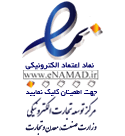Search published articles
Showing 3 results for Bijeh
Asra Askari , Amir Rashid Lamir , Nahid Bijeh , Majid Momeni Moghadam ,
Volume 11, Issue 6 (Nov - Dec 2017)
Volume 11, Issue 6 (Nov - Dec 2017)
Abstract
Babisan Askari , Nahid Bijeh , Amir Rashid Lamir,
Volume 11, Issue 6 (Nov - Dec 2017)
Volume 11, Issue 6 (Nov - Dec 2017)
Abstract
Nahid Bijeh, Asra Askari , Saeed Ramezani, Babisan Askari,
Volume 12, Issue 1 (Jan-Feb 2018)
Volume 12, Issue 1 (Jan-Feb 2018)
Abstract
| Page 1 from 1 |

This work is licensed under a Creative Commons Attribution-NonCommercial 4.0 International License.



